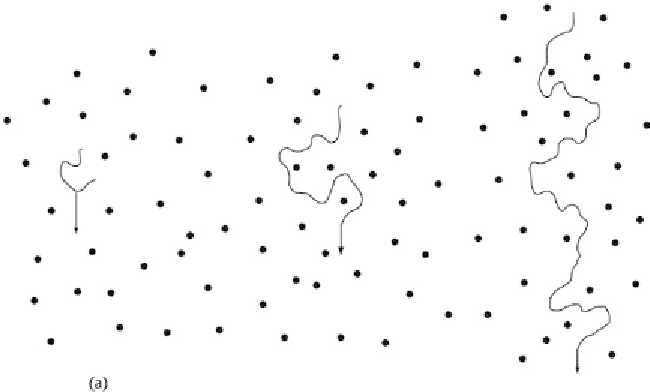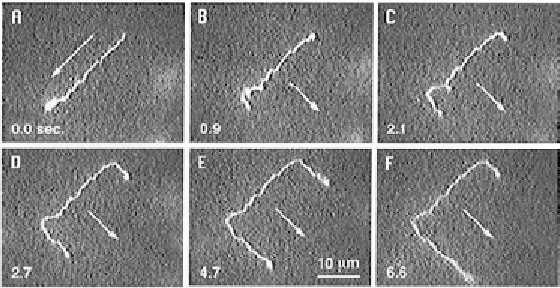Biomedical Engineering Reference
In-Depth Information
Figure 10.5
Electrophoretic migration of a DNA chain in a gel for three different DNA sizes:
(a) Ogston regime; (b) and (c) reptating chains in the gel. (from [13])
For the molecules too large to be separated by direct gel electrophoresis, pulsed
field electrophoresis in gel is the preferred technique [14]. In these experiments,
the orientation of the electric field is periodically switched between at least two
directions. The angle between these two directions can be finite (crossed field elec-
trophoresis) or take the value of 180° so that the electric field changes its direction
along the same orientation (field inversion electrophoresis). This approach is based
on transitory states where the long molecules do not have time to fully extend in
the direction of the electric field before its change of direction whereas small mol-
ecules do. Therefore these small molecules can reach a steady state in which they
are elongated but switch their direction with the field. Long molecules that spend
Figure 10.6
Single molecule DNA image at a 120° change of orientation of the electric field
(arrow) between (A) and (B). To allow for this single molecule image, DNA is fluorescently labeled.
(from [16]).





